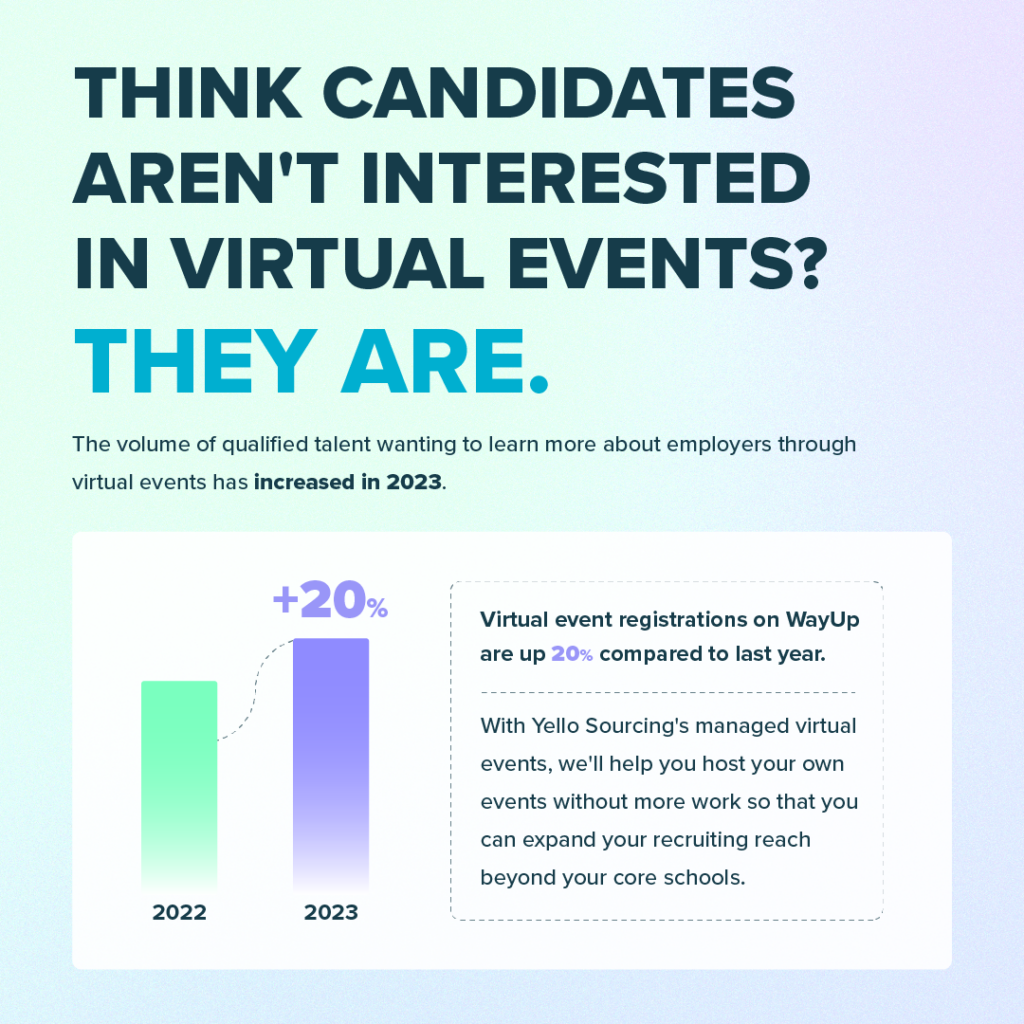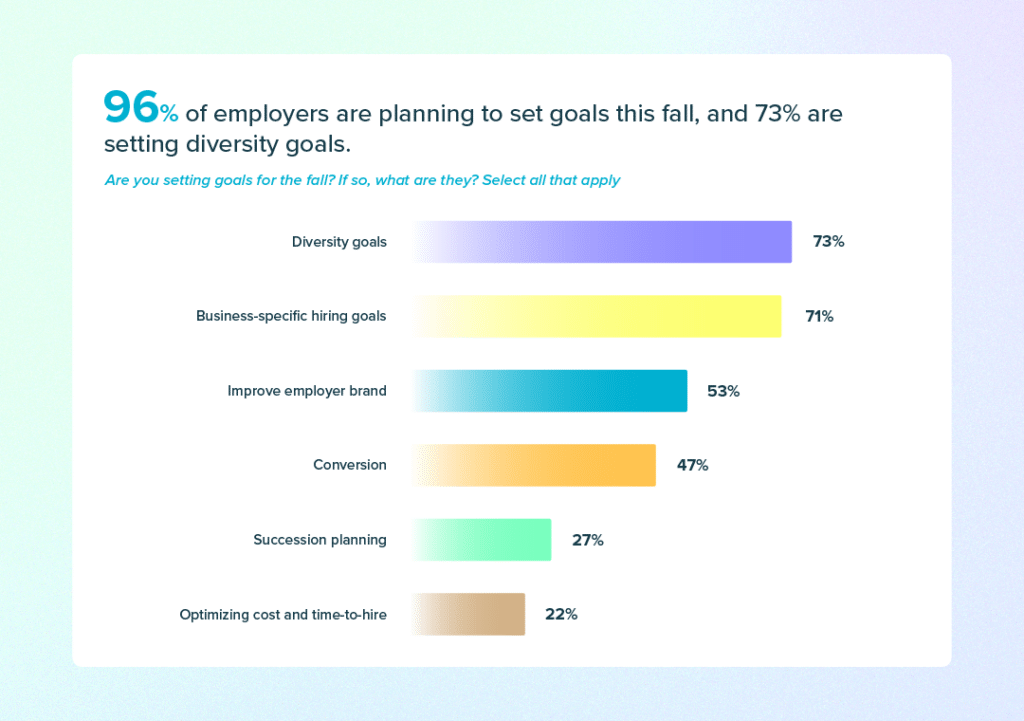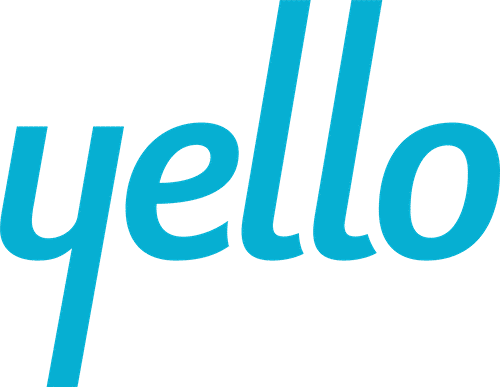2022 also demonstrated that the way candidates and companies interact with one another is evolving. Providing a positive candidate experience, building your employer brand, and engaging with candidates post-offer proved to be more important than years past.
What does that mean for 2023? Will virtual events retain their value in the hiring process? Is DEI still a priority? What goals and metrics should you care the most about, and how do your available resources affect these goals?
These questions, along with many others, highlight the uncertainties that university recruiting teams will face this fall. Through surveys, analyzing industry trends, and conversations with early talent recruiters, we’ve put together a 2023 campus recruiting preview with 3 important themes your campus recruiting team should be prepared to encounter this fall.
1. Recruiters will face new challenges this year, but within those challenges may lie new opportunities.
Difficulty sourcing diverse candidates, finding qualified candidates, limited resources – sound familiar? Employers are anticipating a lot of the same challenges from previous years. The good news is it may not be all bad, or not for everyone at least. With 2022 under your belt, you have a season of post-pandemic/hybrid recruiting data to help you plan a successful campus recruiting strategy in 2023.
While limited budgets will remain a challenge for many recruiting teams in 2023, these restrictions could create opportunities for employers who are hiring in large volumes. Recruiters with substantial hiring targets expect to face less competition for candidates compared to previous years. With many employers scaling back hiring targets, those that are hiring in full force expect to encounter weaker competition as they pursue top candidates for their open roles. Employers who are scaling back must find creative ways to hit their targets despite having limited resources.
According to a survey we ran in July, 55% of employers anticipate that diversity sourcing will be one of their biggest challenges this fall, up from 44% who reported it as a challenge in the 2023 State of Campus report. While many companies say that DEI is still a priority, shifts in the market indicate that diversity sourcing is not being as heavily prioritized or invested in. This puts university recruiters in a precarious position because candidates can tell when employers talk about what’s important but do not back up their claims with action.
Some of the other challenges recruiters can expect to face include:
- Managing event schedules
- Finding qualified candidates
- Quantifying recruiting results and demonstrating their value to company leadership (more on this below)
These look familiar, right? Why do the same challenges come up year after year, and how can they be addressed?
Early talent recruiting is constantly evolving but a lot of the same challenges remain year after year. This happens for a few reasons, including employee turnover and teams not having the time or budget to really focus on solving these issues. And of course, these problems are complex and not easy to solve. So, what can you do to address these challenges? We’ll get into each challenge towards the end, but here’s a high-level overview:
- Work with senior leadership to clearly define the goals of your campus recruiting program and how they tie back to your organization’s business goals. This ensures you are all on the same page, and that you’re investing your resources in the right places.
- Review past recruiting seasons, ask a lot of questions, make data-driven decisions, and clearly track and demonstrate your results this year. Make sure you’re exploring every avenue to improve and measure the ROI of the new strategies you put into place.
- Look for new tools and processes to make your life easier so that you can spend your time focusing on the big picture.
- Build your employer brand. Actively engage with your target candidates and build personal relationships with them through things like events and social media. A strong brand goes a long way to help you stay top of mind when candidates are choosing where to apply and what offer to accept.
2. Virtual events will be as important for employers and candidates as they were in 2022 and a hybrid strategy will give employers the best chance for success.
Students are still interested and want to attend virtual events in 2023! We’ve heard from many employers that they expect virtual event attendance to drop this fall and they are scaling back virtual events as a result. From what our data is telling us, this is simply not the case. Registration for virtual events in WayUp is up 20% compared to last year.

Additionally, 82% of employers said they planned on hosting or attending virtual events in some capacity this fall, with 46% saying they were planning a 75/25 in-person to virtual split. While each company is unique, we recommend targeting a 70/30 split for in-person and virtual events.
We expect to see attendance continue to increase for in-person career fairs this fall as well. I’ll get into this more below, but as campus recruiters deal with limited hiring budgets, virtual sessions will increase as employers host company sessions with students that attend universities outside of their feasible recruiting reach.
In addition to virtual events, hosting some of your hiring steps virtually can be a bonus for candidates as well. Most students are balancing demanding schedules with school and work while having multiple applications and interviews in the works at any given time. Hosting some of your hiring process virtually can help lighten their load and give them more flexibility which helps you ensure a positive candidate experience.
We expect to see the hiring process be close to a 50/50 virtual to in-person split, with virtual events and engagement increasing as candidates move further down the hiring funnel and closer to an offer.
3. Goal setting and measurement will evolve to reflect recruiting challenges.
96% of employers are planning to set goals this fall – more than double the amount that set goals last year. Why the sudden change? Proving ROI and demonstrating value to company leadership will be extremely important because of the limited resources at campus recruiters’ disposal. Taking a data driven approach to campus recruiting will be key for campus recruiters with reduced hiring targets.
Not only will goal setting be more important, the goals recruiters set are evolving as well. Reduced hiring targets will cause recruiters to rethink how they’re measuring the success of their efforts. For example, conversion rates will become a more important metric for recruiters looking to fill a limited number of roles who may have prioritized other goals in years past like application volume.
Here’s the breakdown of the goals employers are planning:

We also expect the core school selection process to take a data focused approach. Employers should take a look at hiring and retention data from previous recruiting cycles in addition to considering campus proximity and alumni ties. Each employer will select their core schools differently, with many taking a tiered approach or even creating scorecards for each campus. Employers should also consider the retention rate of school alumni who work at their company, applicant conversion rates, and diversity data.
Considering diversity data when choosing your core schools will go a long way towards helping you meet your diversity sourcing goals. In addition to HBCU events that can be highly competitive and difficult to get into, employers must build relationships with diversity groups and programs at their core schools in order to be successful.
Here’s a quick reference guide to help you address some of the challenges discussed above.
Challenge #1 : Budget limitations and reduced hiring targets.
What to do:
- Lean into a hybrid strategy and virtual events to supplement in-person recruiting.
- Build processes and automate work to protect your team in case of recruiter turnover.
- Evaluate the metrics you’re using to measure success and make sure they can be easily tracked and prove the ROI of your efforts.
Challenge #2: Sourcing diverse candidates.
What to do:
- Work to build relationships with diversity programs and organizations at your core schools. Don’t rely solely on HBCUs to reach your DEI targets.
- Utilize Yello Sourcing’s candidate database to broaden your reach without creating extra work for your team.
Challenge #3: Candidate engagement and reneges.
What to do:
- Audit your hiring process, especially post-offer acceptance, to see where and why candidates are reneging.
- Automate candidate engagement and touch points with Yello and Abode to keep candidates engaged throughout the entire hiring process.
- Take steps to keep candidates interested after they accept an offer. This could include regularly checking in with each candidate, pre-onboarding activities, sending a welcome package, or assigning a buddy or mentor.
Challenge #4: Managing event schedules and candidate data.
What to do:
- Save your team’s time (and sanity) by automating event work through pre-registrations, automated candidate engagement campaigns, real time evaluations, and easy interview scheduling.
- Stay organized! Keeping all of your event and candidate info in one place lets your team move more quickly and focus on what really matters – engaging with candidates.
- Evaluate EVERY candidate you speak to at an event in Yello. This helps you move candidates through the hiring process quickly and makes sure no candidates fall through the cracks.
Interested in discussing the obstacles you’re facing and how Yello can help?



